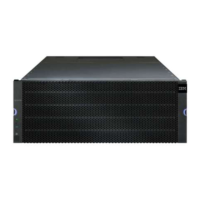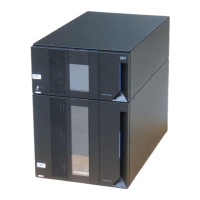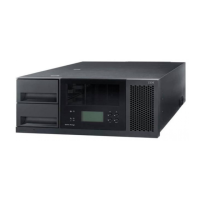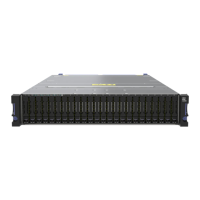Chapter 9. Using the VolumeCopy Premium Feature
The VolumeCopy premium feature lets you copy data from one logical drive (the source) to another
logical drive (the target) in a single storage subsystem. You can use this feature to perform these tasks:
v Back up data
v Copy data from subsystems that use smaller-capacity disk drives to subsystems using greater-capacity
disk drives
v Restore FlashCopy logical drive data to the associated base logical drive
How VolumeCopy Works
When you create a VolumeCopy, you create a copy pair that consists of a source logical drive and a target
logical drive. Both the source logical drive and the target logical drive are located on the same storage
subsystem. During a VolumeCopy, the controllers manage copying the data from the source logical drive
to the target logical drive. The VolumeCopy is transparent to the host machines and applications, except
that you cannot write to the source logical drive during a VolumeCopy operation.
Tip: Because of this restriction, IBM strongly recommends using a FlashCopy version of the logical drive
as the source for the VolumeCopy, rather than using the original logical drive as the source. If you use
the FlashCopy as the source for the logical VolumeCopy operation, then I/O operations to the original
logical drive can continue.
While a VolumeCopy is In Progress, the same controller must own both the source logical drive and the
target logical drive. If one controller does not own both the source logical drive and the target logical
drive before creating the VolumeCopy, ownership of the target logical drive is automatically transferred
to the controller that owns the source logical drive. When the VolumeCopy is finished or stopped,
ownership of the target logical drive is restored to its preferred controller. If ownership of the source
logical drive changes while a VolumeCopy is running, ownership of the target logical drive also changes.
Source Logical Drive
The source logical drive is the logical drive that accepts host I/O and stores data. When you start a
VolumeCopy, data from the source logical drive is copied in its entirety to the target logical drive. While
a VolumeCopy has a status of In Progress, Pending, or Failed, the source logical drive is available only
for read activity.
After the VolumeCopy completes, the source logical drive becomes available to host applications for write
requests. The target logical drive automatically becomes read-only to hosts, and write requests to the
target logical drive are rejected.
The following are valid source logical drives:
v A standard logical drive
v A FlashCopy logical drive
v The base logical drive of a FlashCopy logical drive
v A primary logical drive that is participating in a remote-mirror pair
The following are not valid source logical drives:
v A secondary logical drive that is participating in a remote-mirror pair
v A FlashCopy repository logical drive
v A mirror repository logical drive
© Copyright IBM Corp. 2008, 2012 9-1

